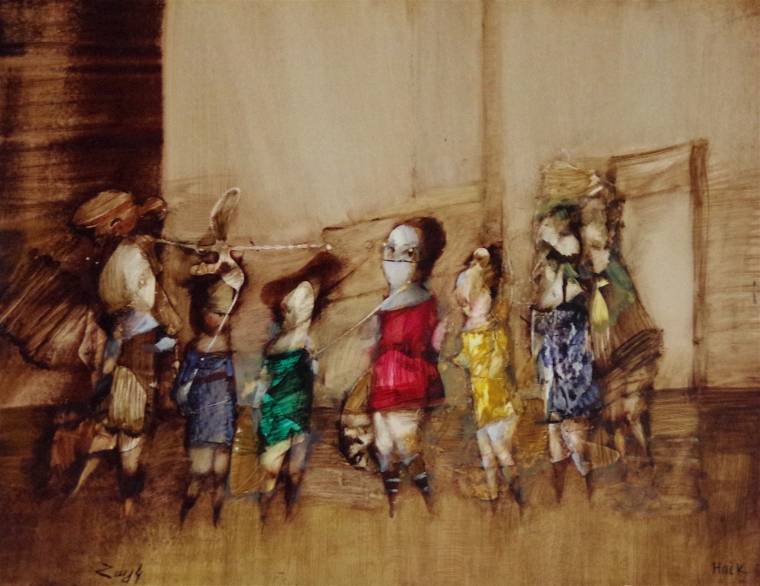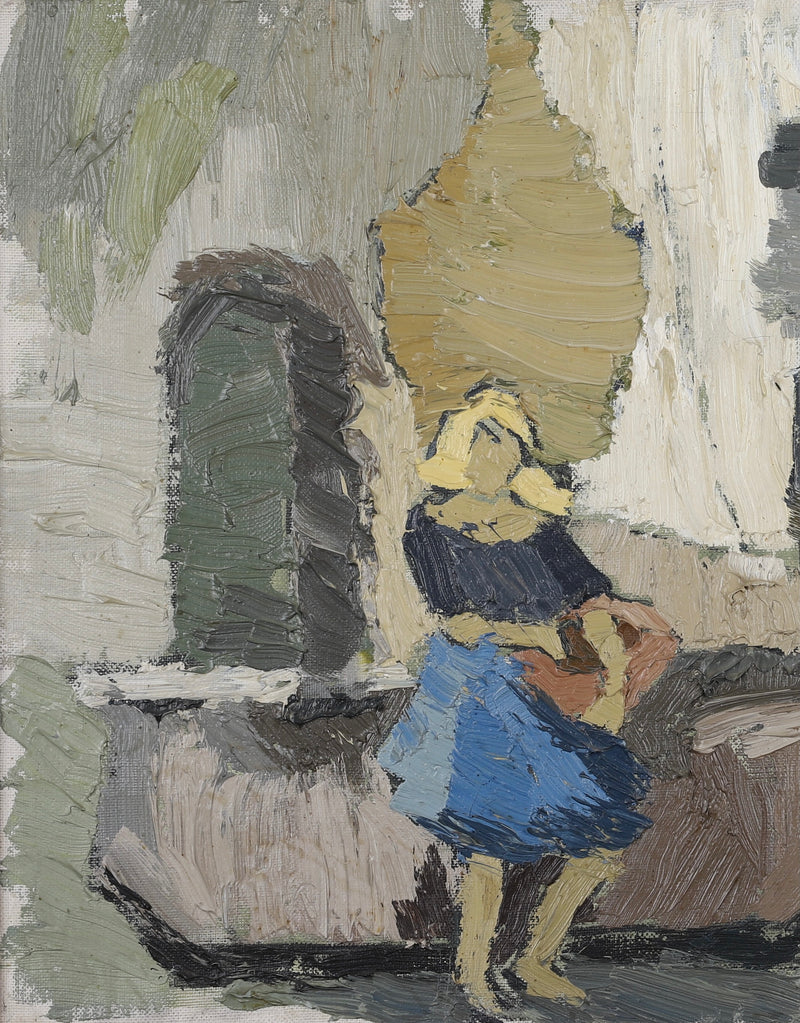Exploring the Depths of Emotion with Figurative Oil Painting Methods
Exploring the Depths of Emotion with Figurative Oil Painting Methods
Blog Article
The Evolution of Figurative Oil Painting: Understanding Its Historic Relevance and Modern Interpretations
The development of metaphorical oil painting offers as an engaging lens with which to check out the interaction between creative expression and historic context. Contemporary artists, attracting from this rich heritage, are now reinterpreting the human figure in methods that test standard narratives.
Origins of Figurative Oil Painting
The origins of figurative oil painting can be mapped back to the early Renaissance in Europe, particularly in the 15th century. This period marked a considerable departure from the level representations and stiff forms characteristic of middle ages art. Artists started to check out naturalism, highlighting the human figure and its emotional expression. The development of oil paint permitted for higher deepness of color and detail, enhancing the realistic look and vibrancy of their job.

In this transformative era, numbers were commonly illustrated within contextually abundant atmospheres, showcasing not just their physical characteristics however likewise their psychological states. Leaders such as Jan van Eyck and Titian took advantage of the tool's versatility, utilizing layering strategies to attain luminance and appearance. This development helped with the representation of complex materials and the nuances of skin tones, adding to the development of portraiture and narrative scenes.
Additionally, the Renaissance focus on humanism promoted an appreciation for uniqueness, which in turn influenced artists to create more relatable and dynamic figures - figurative oil painting. As a result, metaphorical oil painting emerged as an effective car for storytelling and emotional interaction, laying the foundation for future creative activities and styles
Trick Historical Movements
Significant historical activities have actually shaped the development of figurative oil paint, each contributing special philosophies and techniques that increased the tool's possibilities. The Renaissance marked a turning point, stressing realistic look and the human type, with artists like Leonardo da Vinci and Michelangelo pressing the boundaries of physiological precision and viewpoint. Following this, the Baroque age brought remarkable contrasts of light and shadow, exhibited by Caravaggio, who instilled spiritual styles with extreme emotionality.
The 19th century introduced Romanticism and Realism, where artists such as Delacroix and Courbet challenged classic suitables, focusing on individual expression and everyday life. The advent of Impressionism additionally reinvented the tool by highlighting the impacts of light and shade, resulting in a separation from conventional representation.
In the early 20th century, activities like Expressionism and Cubism redefined metaphorical painting with abstraction and the exploration of psychological depth. Each of these activities not just mirrored the societal modifications of their times but also prepared for modern interpretations. The interplay in between these historical motions has actually created a rich tapestry of styles and philosophies, influencing modern musicians in their pursuit of recording the human experience on canvas.
Methods and Products Development

Throughout the Baroque duration, methods such as chiaroscuro and sfumato arised, enhancing the psychological resonance of figurative make-ups. Musicians began to explore glazes and impasto, controling appearance and brightness. By the 19th century, innovations like using pre-mixed paints in tubes reinvented ease of access, permitting musicians to repaint en plein air and capture the short lived results of light.
The 20th century witnessed the introduction of synthetic pigments and mediums, which increased the combination and modified the uniformity of oil paints. The expedition of brand-new application methods, such as combination blades and brushes of differing tightness, additional varied artistic expression. Collectively, these advancements reflect the developing connection between products, techniques, and the artistic vision inherent in metaphorical oil painting.

Contemporary Interpretations
Contemporary analyses of figurative oil paint reflect a dynamic discussion between tradition and technology, where artists challenge established standards and check out diverse motifs. This evolution materializes in different methods, as contemporary artists mix timeless methods with contemporary ideas, commonly addressing social, political, and individual stories.
Numerous specialists attract motivation from historic works, yet they instill their items with contemporary perspectives, making use of the human form as a lorry for commentary on identification, gender, and culture. Artists increasingly try out abstraction, distortion, and multimedias, which permits a wider analysis of the figure and its context.
Moreover, using vivid color palettes and unconventional make-ups usually offers to interfere with typical checking out experiences, provoking crucial engagement from target markets. This change in focus expands beyond aesthetics; it mirrors a growing understanding of the complexities of human experience in an interconnected globe.
As figurative oil painting continues to evolve, it continues to be a crucial medium for exploring the subtleties of modern life, personifying both a regard for heritage and a commitment to dynamic idea. The result is an abundant tapestry of expression that reverberates with the intricacies of the contemporary human problem.
Influence on Modern Art
The impact of figurative oil paint on modern art is extensive, as it has actually continually his comment is here inspired a myriad of creative movements and methods throughout the 20th and 21st centuries. From Expressionism to Surrealism and past, the expedition of the human figure has stayed a central theme, permitting musicians to convey complex emotions and narratives. This emphasis on figurative depiction has actually led to a re-examination of standard strategies, leading to innovative strategies that blend realistic look with this post abstraction.
Additionally, contemporary musicians have actually accepted figurative oil painting as a way to resolve political and social problems, using the tool to challenge perceptions of identity, society, and gender. The rebirth of rate of interest in metaphorical job in current years mirrors a longing for link in an increasingly digital globe, where human experience and feeling are vital.
Furthermore, the dialogue between metaphorical oil paint and contemporary art is evident in the jobs of artists such as Kehinde Wiley and Jenny Saville, that make use of historical referrals while infusing their pieces with contemporary significance. Ultimately, metaphorical oil paint proceeds to shape and redefine modern-day artistic expression, underscoring its long-lasting value in the art world.
Conclusion
The evolution of metaphorical oil painting emphasizes its historic importance and versatility across numerous imaginative movements. Inevitably, figurative oil painting continues to be a crucial medium for discovering the human experience, reverberating greatly in today's electronic landscape.
The advancement of metaphorical oil painting offers as an engaging lens through which to check out the interplay between imaginative expression and historical context.Substantial historic activities have shaped the advancement of figurative oil painting, each contributing special ideologies and methods that expanded the tool's opportunities.As historical activities formed the trajectory of metaphorical oil paint, the methods and materials used by artists have actually likewise gone through substantial transformations. figurative oil painting.The influence of figurative oil paint on contemporary art is profound, as it has consistently influenced a myriad of artistic activities and practices throughout the 20th and 21st centuries.The evolution of metaphorical oil painting emphasizes its historic significance and flexibility throughout home various creative activities
Report this page